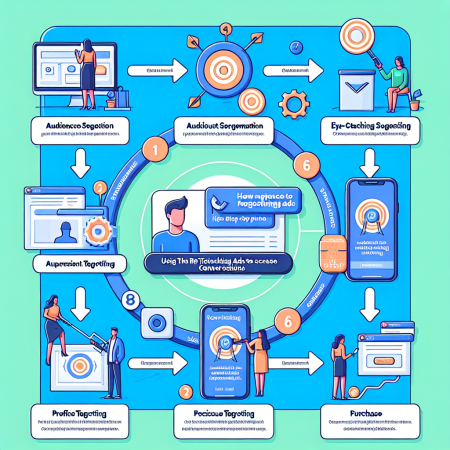How to Use Retargeting Ads to Increase Conversions
Understanding Retargeting Ads
Retargeting ads are a powerful marketing tool that allows you to target users who have previously interacted with your website or products but did not make a purchase. By using browser cookies, retargeting ads track these users and show them relevant ads across the web, reminding them of your brand and encouraging them to return.
One key benefit of retargeting ads is their ability to keep your brand top of mind for potential customers. By displaying ads to users who have already shown interest in your offerings, you can increase the likelihood of conversion by providing gentle reminders of your products or services.
How Retargeting Works
Retargeting works by placing a piece of code, known as a pixel, on your website to track visitors. When a user visits your site, this pixel adds them to your retargeting list. Subsequently, when the user browses other websites, the retargeting platform displays your ads to them, keeping your brand in front of their eyes.
Retargeting ads can be further refined by segmenting users based on their behavior on your site. For example, you can create specific retargeting campaigns for users who visited a particular product page but did not complete a purchase, tailoring your ads to their specific interests and needs.
Setting Up Retargeting Campaigns
To set up a successful retargeting campaign, start by defining your target audience and objectives. Identify the segments of users you want to retarget, such as visitors who abandoned their shopping carts or users who viewed specific landing pages. By knowing your audience, you can create compelling ad creatives that resonate with their needs and preferences.
Next, choose a retargeting platform that aligns with your goals and budget. Platforms like Google Ads, Facebook Ads, or specialized retargeting services offer different features and targeting options. Select the platform that best suits your campaign objectives and audience segmentation strategies.
Optimizing Retargeting Ad Creatives
The success of your retargeting campaigns relies heavily on the creatives you use in your ads. When creating ad visuals and copy, make sure they are engaging, relevant, and aligned with the user’s previous interactions. Highlight the value propositions of your products or services to reignite interest and drive conversions.
A/B testing different ad variations can help you identify which creatives resonate best with your audience. Experiment with different images, messages, and calls-to-action to uncover the most effective combinations that drive higher click-through rates and conversions.
Measuring Retargeting Performance
Monitoring the performance of your retargeting campaigns is crucial for optimizing their effectiveness. Track key metrics such as click-through rates, conversion rates, and return on ad spend (ROAS) to gauge the success of your campaigns. Analyze this data to identify trends, patterns, and areas for improvement.
Utilize retargeting platform analytics tools to gain insights into user behavior, ad performance, and campaign ROI. By continuously monitoring and optimizing your retargeting efforts based on data-driven insights, you can refine your strategies to boost conversions and maximize your advertising ROI.

